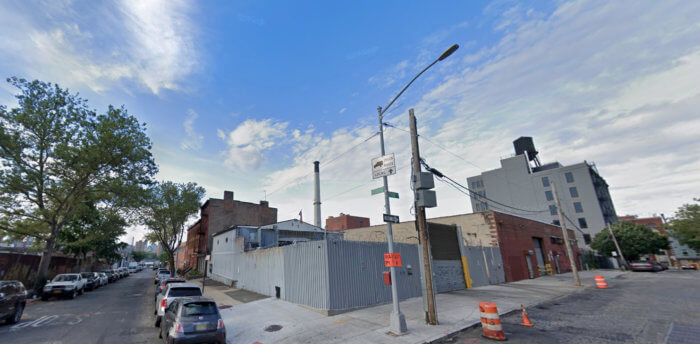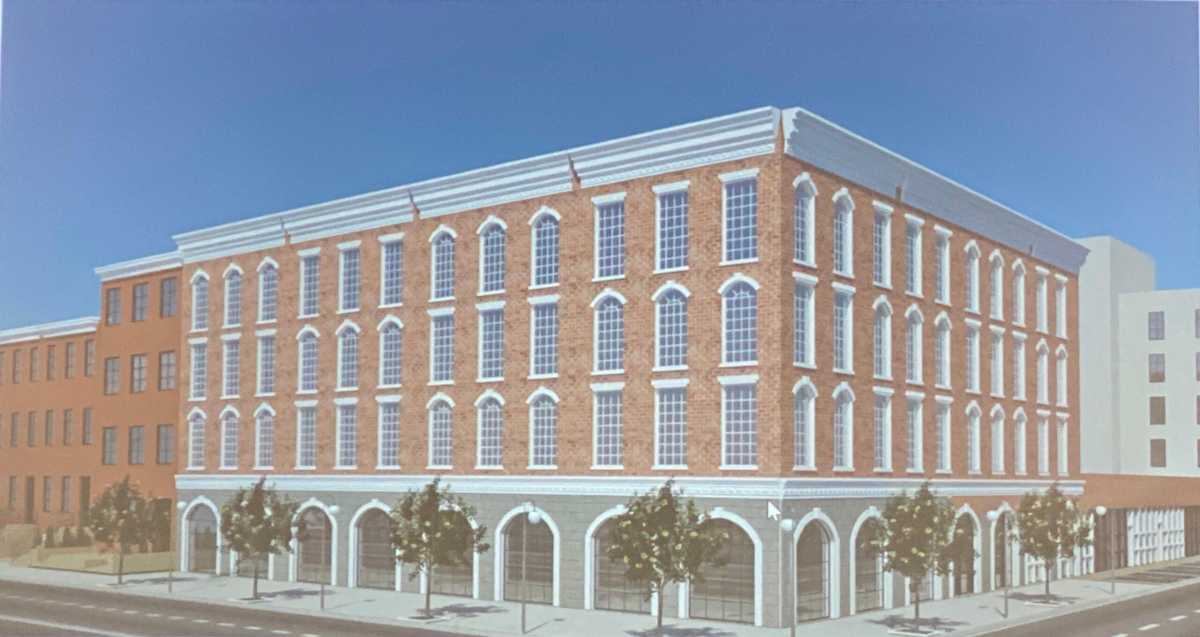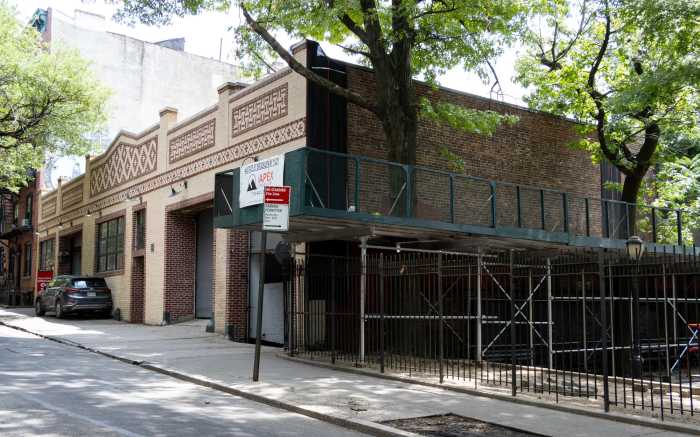Civic gurus shot down a developer’s proposal to build a four-story mixed-use building in Vinegar Hill, with locals fearing a rash of new, oversized building projects in the low-rise historic district.
“These new buildings could be more than twice as high as the historic brownstones and be forever totally out of character with the low-rise houses of Vinegar Hill Historic District, which we so much want to protect,” said Monique Denoncin, a longtime Vinegar Hill resident. “The unguided explosion of development that we experienced in Dumbo will then come our way. We do not want to be a reflection of Dumbo.”
A lawyer representing the Spinard family, which owns a roughly 6,500 square-foot lot at 265 Front St., came before Community Board 2’s Land Use Committee seeking the group’s endorsement of a rezoning application to allow the construction of a 50-foot-high L-shaped building the property.
The development, according to attorney Eric Palatnik, would contain nine two-bedroom units, commercial space on the ground floor and a 30-foot court yard in the back.

But board members living around the proposed development were not thrilled with the idea, fearing the development would commercialize an otherwise residential block, and invite the same noise, traffic, and — worst of all — tourists that plague Dumbo to their neck of the woods.
“Trucks will idle, they’ll back up, traffic will be blocked, there’s noise, there’s pollution,” said Vivian Scott Woodburn. “Take a walk from the now overcrowded F train at Jay and York street or through the hordes of selfie-taking tourists on Washington Street in Dumbo and you’ll come upon on a tiny oasis of tree-lined cobbled streets and historic 19th century architecture.”
The Spinards are looking to change the zoning around the industrial property to have an R6A designation, which would allow buildings of up to eight stories in height, almost twice as high as the adjacent 19th-century row houses.
However, the family opted to a shorter, less dense structure to avoid installing an elevator — a legal requirement for buildings six stories or higher. And by going with a smaller development, the Spinards will not have to set-aside 20 to 30 percent of the building for so-called “affordable” housing, which is required for structures larger than 12,500 square feet, according to Palatnik.
“The economics of it don’t work out so well,” he said.
But the development as proposed remains too tall for locals, and several residents argued that the developers should instead go for the next-lower zoning designation, known as R6B, that would allow about the same height as their plans but with slightly less bulk, saying the Spinards could flip the property to another developer interested in taking full advantage of the heights allowed under R6A.
“We’ve seen rezonings occur and whole other issues have popped up,” said Bill Flunoy.
The community board’s recommendation is purely advisory, but the Spinard family agreed to pursue an R6B designation over the larger R6A, and to eliminate the building’s commercial components in response to group’s criticisms, Palatnic stated in a Feb. 20 email.
“We are amending to R6B. No commercial overlay,” the attorney said.

























